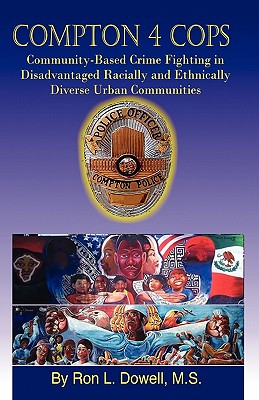You are here
Back to topCompton 4 Cops: Community-Based Crime Fighting in Disadvantaged Racially and Ehtnically Diverse Urban Communities (Paperback)
$16.95
Usually Ships in 1-5 Days
(This book cannot be returned.)
(This book cannot be returned.)
Description
Since the public does not have a consistent or even coherent set of expectations for the police to fulfill, a one-size-fits-all approach to policing service that was designed for the majority ethnic or racial group is no longer tenable. I advocate ways that policing can be improved to satisfy the goals of reducing crime, reducing citizens' fears, and satisfying victims that justice is done, particularly in racially and ethnically diverse disadvantaged communities.
Other authors, notably Braga and Weisburd, have described in their book, Police innovation: Contrasting perspectives, the various policing models now in use. They have not however offered a historical perspective that traces many modern police practices to innovations developed during the American period of slavery. Those authors also have not prominently discussed the problem of building trust nor have they explored the class and race context of American policing as practiced in today's environment. Other authors have not written from the perspective of one who has experienced urban policing as both service recipient and service provider.
No one has so thoroughly reviewed the problem of policing in an urban environment from the policy prospective of the servicing agency or department. Public policy makers, city officials, police managers, crime analyst, security personnel, and anyone concerned with urban policing suggestions for efficiently managing public dollars and improving the effectiveness of delivering police services in some poor communities compose the chief markets for this book.
The methods used to collect information for this book were primarily archival in nature and consisted of library and Internet searches. Scholarly articles, peer-reviewed journals, unpublished master's theses, and similar documents were reviewed to gather relevant information. Other sources included personal work experience and observations, world travel, and experiences gained while living my entire life in socially and economically disadvantaged and racially diverse communities.
Following a description of the problem and methods used in preparing this book, a comprehensive literature review is offered. Chapter 2 begins by tracing the origins and early innovations of the predominant policing model or style used in the United States today. The examination includes discussion of underlying philosophical, theoretical, and strategic bases of current policing styles and innovations. Included also is discussion of the early reform efforts to eliminate police corruption.
Chapter 3 speaks to the more recent policing innovations and explores community-oriented (COP) and problem oriented policing (POP). Considered to be proactive policing, COP has shown to increase police legitimacy among many minorities while POP makes the problem the focus of much police activity. The problem of fear, both of crime and of the police is delved into. The philosophical and practical bases of COP and POP are examined.
Chapter 4 examines what is considered reactive or traditional recent innovation manifestations such as broken windows; pulling levers; hot spots; and Compstat policing. Policing based on empirical findings is also discussed.
Next Chapter 5 examines and explores minority perceptions of government and police legitimacy, along with the role and responsibilities within police-community relationships. The book addresses the unique patterns of crime and disorder and fear of crime that are of concern to residents of disadvantaged racially and ethnically diverse urban communities and illustrates many policy and practice inhibitors associated with agencies attempt to address them.
Chapter 6 includes information on what works in similar communities. The book concludes with a discussion of the implications of the findings, based on the literature, and presents recommendations for future research.
